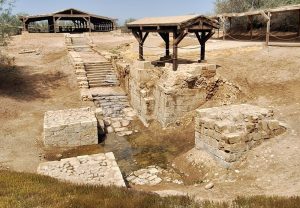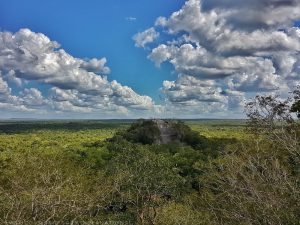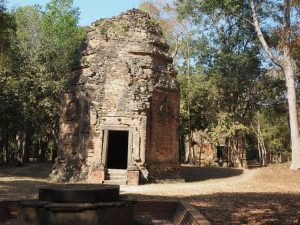Baptism Site “Bethany Beyond the Jordan” (Al-Maghtas)
A place of pilgrimage where, in Christian belief, John the Baptist baptised Jesus.

A place of pilgrimage where, in Christian belief, John the Baptist baptised Jesus.

Ruins of the oldest center of learning in India, which lasted for 800 years.

Ruins of a 5th-century city and palace on a dramatic rock outcropping.

A well-preserved 1st-century Roman theater and a triumphal arch nearby with unique bas-relief images.

Archaeological excavations of the first permanent urban settlements in Central Asia, 5000 years old.

A mountain on whose peak stands the tomb of King Antiochus I, an imposing artistic achievement of the Hellenistic period.

A Silk Road city 4,000 years old, with remains of five walled cities from different eras.

The extensive ruins – palaces, churches, mosques, fortifications, and homes – of an important trading city on the medieval Silk Road, where diverse cultures and architectural traditions met and blended.

The 12-century capital of Sri Lanka built by the Chola rulers and containing the ruins of spectacular Buddhist monuments.

Several very early Christian churches that were influential in the development of early Armenian church architecture.

Remnants of early Islamic India, including Northern India’s oldest mosque and a minaret that is the highest stone structure in India.

A huge region of beautiful landscapes and archaeological sites, important in the history of the Mongol Empire as well as the Uighur people.

An ancient Nabatean town with a number of massive rock-cut tombs from the 1st century AD.

Twin sites with the remains of remarkable pre-Mughal architecture in Gujarat: mosques, tombs, stepwells and more.

A huge Roman-era arena built for entertainment in a colony of the Roman Empire.

Remains of the period when Tarragona was Tarraco, the Roman capital of the Iberian peninsula.

Remains of a town and other monuments dating to the Dvaravati Empire, origin of the Si Thep School of Art.

Ruins of a Neolithic settlement 6000-9000 years old.

A Greco-Roman spa town and the enormous calcium terraces, waterfalls, basins and pools where it is located.

A classical temple with many original columns and the oldest Corinthian capital ever found.

Extensive ruins of a Maya city inside a huge biosphere reserve.

Ruins of an ancient town, much of it Roman-era, and birthplace of the cult of Venus.

A group of 6th-7th-century Hindu temples where the capital of the Chenla Empire once stood.

An 11th-century Hindu temple complex in an isolated and dramatic location, with remarkably well-preserved architecture and art.

10th-century temples from a short-lived capital city, origin of the Koh Ker style of sculpture.

The remarkably-preserved remains of ancient Roman cities destroyed in a sudden eruption of Mount Vesuvius.

A 9th-century complex of hundreds of Hindu and Buddhist temples with stone carvings that are masterpieces of Siva art.

Hundreds of ruins of temples and other structures of the vanished Vijayanagara kingdom.

A large group of very well-preserved Roman buildings.

Two sets of ruins from the Mycenaean civilization in the Peloponnese, which preceded the Ancient Greeks.

A little-known archeological site in southern Albania with ruins from centuries of occupiers.

An ancient and disputed city, holy to three major religions.

Numerous archeological sites with dry-stone structures dating to the Bronze Age and Late Iron Age.

Two-thousand-year-old earthworks that demonstrate the Hopewell people’s knowledge of geometry and astronomy.

Seven impressive stone structures used for ritual purposes during the Bronze Age.

A remarkable achievement in earthen construction by hunter-gatherers more than 3000 years ago.